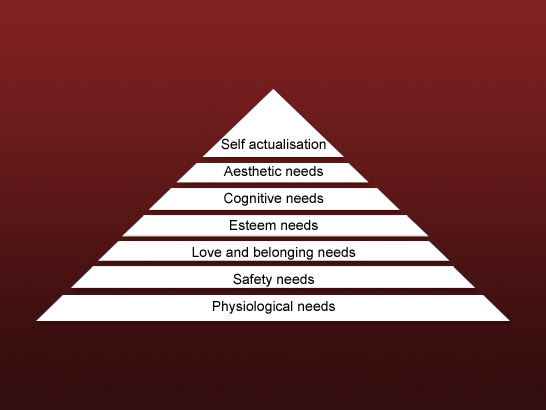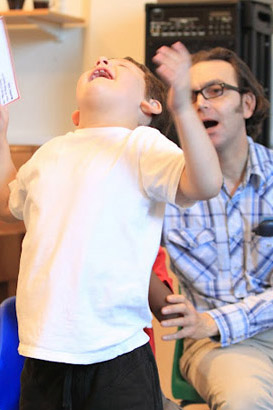
Maslow formulated a model to illustrate a hierarchy of needs, whereby higher order aspirations cannot be attained unless the individual's underlying basic needs are intact. So, for example, children will need to have had their care needs met, feel safe, settled, valued and feel that they belong to the class before they are able to engage in social communication or learning.

Maslow regarded all communication – positive or negative – as an expression of need.
You should consider any voluntary behaviour of a child as potentially communicating something, eg discomfort, being unsure of boundaries, a lack of confidence, feeling unvalued, being unsure how to do something or being frustrated at not being able to achieve an outcome.
The next slide lists some examples of a child's behaviour. In each case, try to infer a possible reason for the behaviour.
Check your interpretations by clicking on the box in the right hand column.
Consider how you would respond to
the child concerned.
| Child's behaviour | Possible reason |
| Wails persistently | Is expressing discomfort. |
| Grunts loudly whilst you are talking with other children | Wants to be acknowledged and is feeling ignored. |
| Keeps going to the cupboard and banging on the door | Wants you to get her something she knows is in there. |
| Bangs on a tray when you are sitting in a group | Wants your attention. |
| Approaches you and gives you a toy | Wants you to play with the toy with her. |
| Brings you your coat | Wants you to go out to play with her. |
| Says 'tatibo' when upset | May be using a made-up word special to the family for something she doesn't like (here 'tatibo' is a family name for a jacket potato). |
| Says to you 'put your shoes on now' | May be using overheard speech to ask whether it is the right time for her to get ready to go outside. |